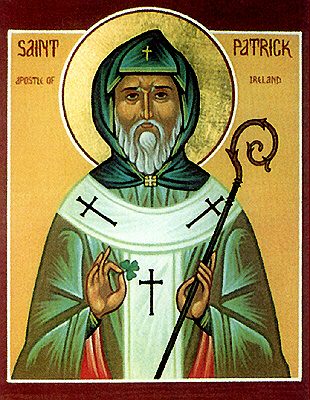Palm Sunday, the Sunday prior to Resurrection Sunday, is the day Jesus enters Jerusalem on the back of a colt. Upon His entry into the city the Jews, believing He was coming to liberate them from the Romans, lined the streets in celebration waving palm branches and laying them, and in some cases their cloaks, on the ground for Jesus to ride over. They were anticipating something momentous, yet what they were anticipating and what ended up happening wasn't anywhere even close. The Jews believed He would be their savior from decades, if not centuries, of living under the oppressive rule of one after another conquering nation. Rome was just the latest of many.
Saturday, December 31, 2011
Tuesday, December 13, 2011
Of Holidays: St Patrick's Day
St Patrick's Day (March 17th) is probably the most recognized of the many Feast Days, followed closely by St Valentine's Day. This was a day set aside to commemorate an individual who was instrumental in spreading the good news of Salvation to an, as yet, untapped area of the world, Ireland. Though it is, as in many cases, quite unique how God brought about this occurrence. St Patrick was born in 387 AD to a rich family living on the island of Brittania (England) back when it was still controlled by the Romans. When he was about 16 years old he was abducted by Irish raiders and taken into captivity in Ireland. According to his Confession he had a dream where God told him to escape from his captivity and go back to Brittania. He successfully escaped and eventually made it a monastery in Gaul (France) where he studied to become a priest. In 432 he had another dream where God told him to go back to Ireland and spread the Gospel to the Pagan, Polytheistic, people living there. One noteable aspect of St Patrick's teaching methods was to use the shamrock (clover) to explain the Trinity.
Labels:
Feast Days,
holidays,
Paganism,
Polytheism,
shamrock,
St. Patrick's Day,
Trinity
Wednesday, December 7, 2011
Of Holidays: Lent
Lent is a period of 40 days and nights, the example of which comes from Christ's time he fasted in the desert up to His temptation by satan and embarkation of his ministry as well as the time Moses spent fasting on Mount Sinai when he received the first copies of the tablets with the Ten Commandments. This period begins on Ash Wednesday and ends on Holy Thursday (the day before Christ's crucifixion). The dates for these events are determined, based on a resolution at the Council of Nicaea of 325 AD, where Resurrection Sunday falls on the Sunday after the Paschal Full Moon (the first full moon on or after the vernal (spring) equinox). Then Ash Wednesday is set 40 days prior to Holy Thursday, which is, of course, three days prior to Resurrection Sunday.
Subscribe to:
Comments (Atom)


